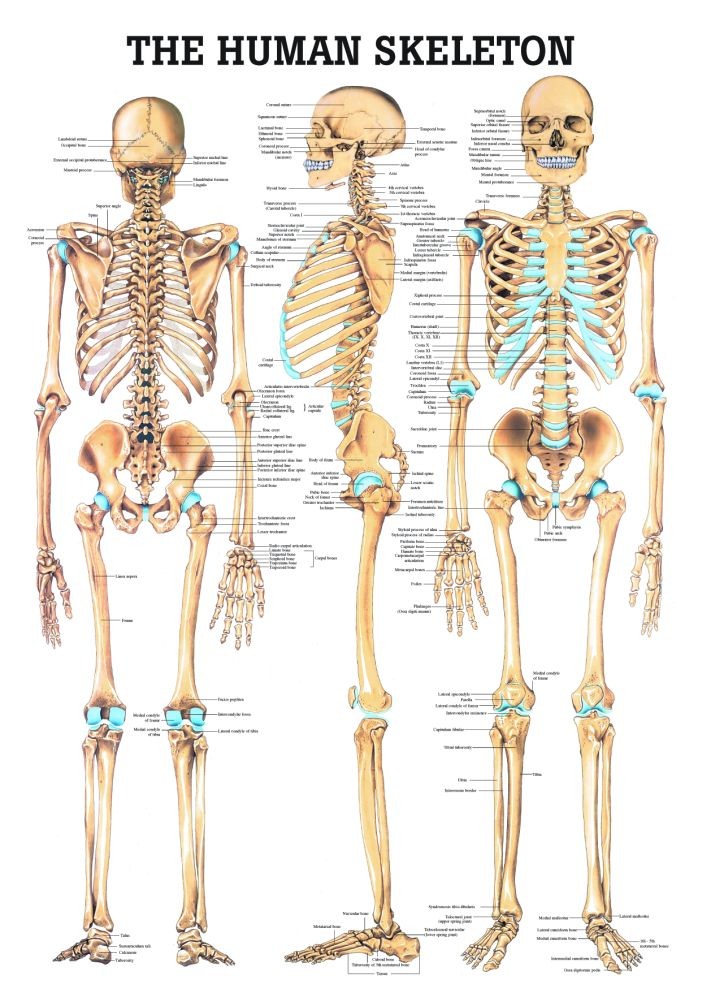Are you searching for the latest information on the Anatomy Career Scope in Pakistan Anatomy is a discipline of science that studies the body structure of humans, animals, and other living beings. It also includes plant dissection and microscopic research. An anatomist is interested in the shape, size, structure, location, and innervations of a live organism’s organ, such as a human, animal, or plant.
Human Anatomy, Animal Anatomy, and Animal Anatomy are the three primary divisions of anatomy, with Human Anatomy being one of the most essential. Anatomy has a broad reach in Pakistan since one cannot be a medical expert without understanding of anatomy. There are several universities in Pakistan that provide Anatomy at the Bachelors and Masters levels. Here you can quickly get the greatest information on the breadth of anatomy, employment possibilities and salaries, key Anatomy disciplines, and a list of universities in Pakistan that provide Anatomy.
[lwptoc]
Types of Anatomy
There are two types of anatomy: macroscopic anatomy and microscopic anatomy. The inspection of an animal’s bodily components with unassisted eyesight is known as macroscopic anatomy or gross anatomy. The branch of superficial anatomy is also included in gross anatomy. Microscopic anatomy is the use of optical equipment to investigate the tissues of diverse structures, also known as histology, and cells.
Anatomy Career Scope in Pakistan
Anatomy courses are recommended for pre-medical, pre-veterinary, nursing, exercise science, and biology students. Courses in this topic area sometimes include a combination of class work and lab work, which will include teaching in research and analytical methodologies for both human and animal systems. This field of study includes courses such as human anatomy and physiology, developmental anatomy, neuroanatomy, histology, and veterinary anatomy, and it is widely available in colleges and universities around the country.
Anatomy Courses:
The Anatomy is the study of the physical structure of animals, particularly humans. The Anatomist is knowledgeable with dissection procedures, gross anatomy, Neuroanatomy, and histology. He is well-versed on the structure and function of the numerous bodily parts, organs, and tissues. Anatomy graduates’ career options and job prospects are also discussed.
He has examined the interior anatomy of numerous organisms and is well-versed in evolutionary adaptations. He may examine a tissue sample to discover numerous anatomical qualities. Anatomy is frequently utilized to supplement biological skills.
An overview of common anatomical ideas is provided below:
- Proper anatomical terminology
- Function of organ systems
- Basic identification of anatomical structures
- Observational and data analysis
- Effective dissection and laboratory techniques
General Anatomy
Parts of human body
Head
- Ear
- Face
- Eye
- Cheek
- Nose
- Mouth
- Chin
- Neck
Trunk
- Thorax
- Abdomen
- Pelvis
- Back
Upper limb
- Pectoral girdle
- Axilla
- Arm
- Elbow
- Forearm
- Hand
Lower limb
- Pelvic girdle
- Buttocks
- Hip
- Thigh
- Knee
- Leg
- Foot
Cavities
- Cranial cavity
- Spinal cavity
- Thoracic cavity
- Abdominopelvic cavity
- Abdominal cavity
- Pelvic cavity
Planes, lines, and regions
- Regions of head
- Regions of neck
- Anterior and lateral thoracic regions
- Abdominal regions
- Regions of back
- Perineal regions
- Regions of upper limb
- Regions of lower limb
Anatomy Career Scope in Pakistan Job Opportunities

Employment Areas
- Academic Medical Publishing
- Medical Colleges
- Pharmacologist
- Nursing Colleges
- Physical Therapy Institutes
- Pharmacy Colleges
- Research Institutes
- Homeopathic Colleges
- Easter Medicine Colleges
- Veterinary Universities
- Speech and Language Therapist
- Paramedical Institutes
Anatomy Jobs in Pakistan:
- Pharmacist
- Laboratory-Based Jobs
- Biological Technician
- Academic Writer
- Applied Researcher
- Medical Journalist
- Lecturer
Human Anatomy Major Subjects:
- Introduction to Anatomy
- Cells and Tissues
- Cellular Structure and Function
- Organ System of Body
- Skeleton System
- Muscular System
- Physiology
- Fundamentals of Organic Chemistry
- Stages of Growth and Development
- Integration and control of body system
- Reproductive System
- Nervous System
Animal Anatomy Major Subjects:
- Physiology
- Metabolic System and Nutrition
- Anesthesiology
- Parasitology
- Immunology
- Diagnostic Imaging
Plant Anatomy Major Subjects:
- Genetics and Plant Evolution
- Cell Biology
- Plant Physiology
- Anatomy and development
- Ecology Genetics and Evolution
- Fundamentals of Statistics
Anatomy Eligibility Criteria
Students applying for BSc Anatomy at institutions overseas must meet the minimal scholastic requirements as well as pass the applicable English proficiency exam. Candidates may consult the official websites of their individual universities to determine the specific criteria for the upcoming academic year.
The essential prerequisites for admission to foreign universities are listed below.
- Candidates must hold a senior secondary diploma from an approved college/school/institution.\
- Students must have completed the university-required scientific disciplines of Mathematics, Physics, Chemistry, and Biology.
- Applicants must have taken the PTE/IELTS/TOEFL exam, whatever is preferred by institutions.
- Candidates must have a valid passport and other needed documentation.
Anatomy Salary in Pakistan
Throughout the year, there are several career prospects for anatomists in Pakistan. You may easily find work in Pakistan’s public and private sectors at a good income. It offers up a plethora of job opportunities for you. Anatomist salaries might vary depending on the organisation. A fresh applicant for anatomist earns between Rs. 40,000 and Rs. 70,000, whereas experienced anatomists earn between Rs. 70,000 and Rs. 200,000 in Pakistan.
Golden Tips
1-An Anatomist must be well-versed in other fundamental medical sciences like as physiology, biochemistry, and pathology.
2-You must pursue postgraduate studies in order to obtain high-level positions in your area.
3-Never pursue a degree or career without a genuine interest in it.
4-Aside from human anatomy, there is a wide range of animal and plant anatomy.
Universities Offering Anatomy in Pakistan:
In Pakistan, there are a lot of outstanding institutions that provide Anatomy; the names of some of these institutes are mentioned here.
- University of Health Sciences (Lahore)
- National University of Medical Sciences (Rawalpindi)
- Army Medical College (Rawalpindi)
- University of Agriculture (Faisalabad)
- Dow University of Health Sciences (Karachi)
- Khyber Medical University (Peshawar)
- The Islamia College of Bahawalpur (Bahawalpur)
- Isra University (Islamabad)
- King Edward Medical University (Lahore)
- Liaquat University of Medical and Health Sciences (Jamshoro)
- Peshawar Medical and Dental College
- Bahria University (Karachi)

Is Bs In Anatomy Is A Complete Separate Bs Program Like Other Bs Programs?